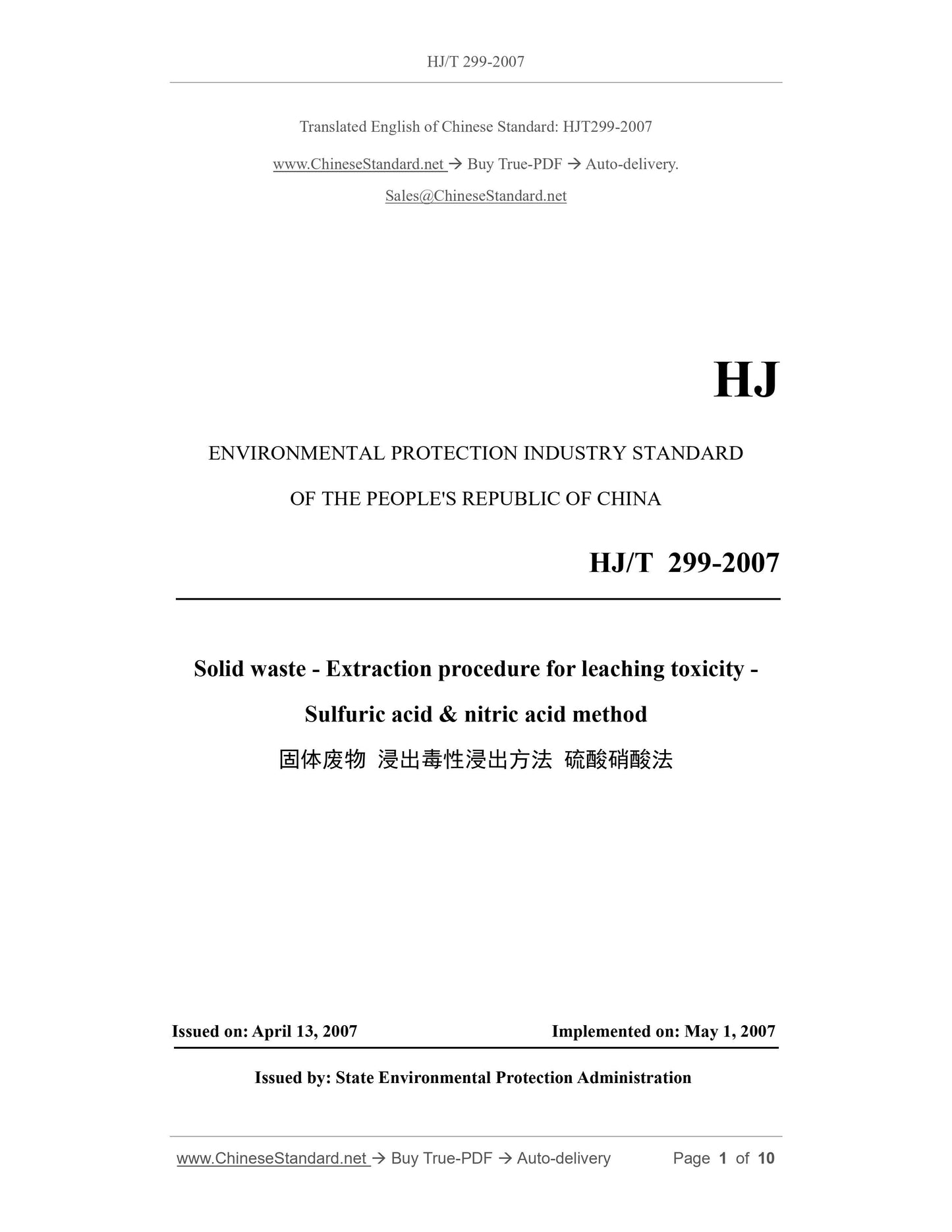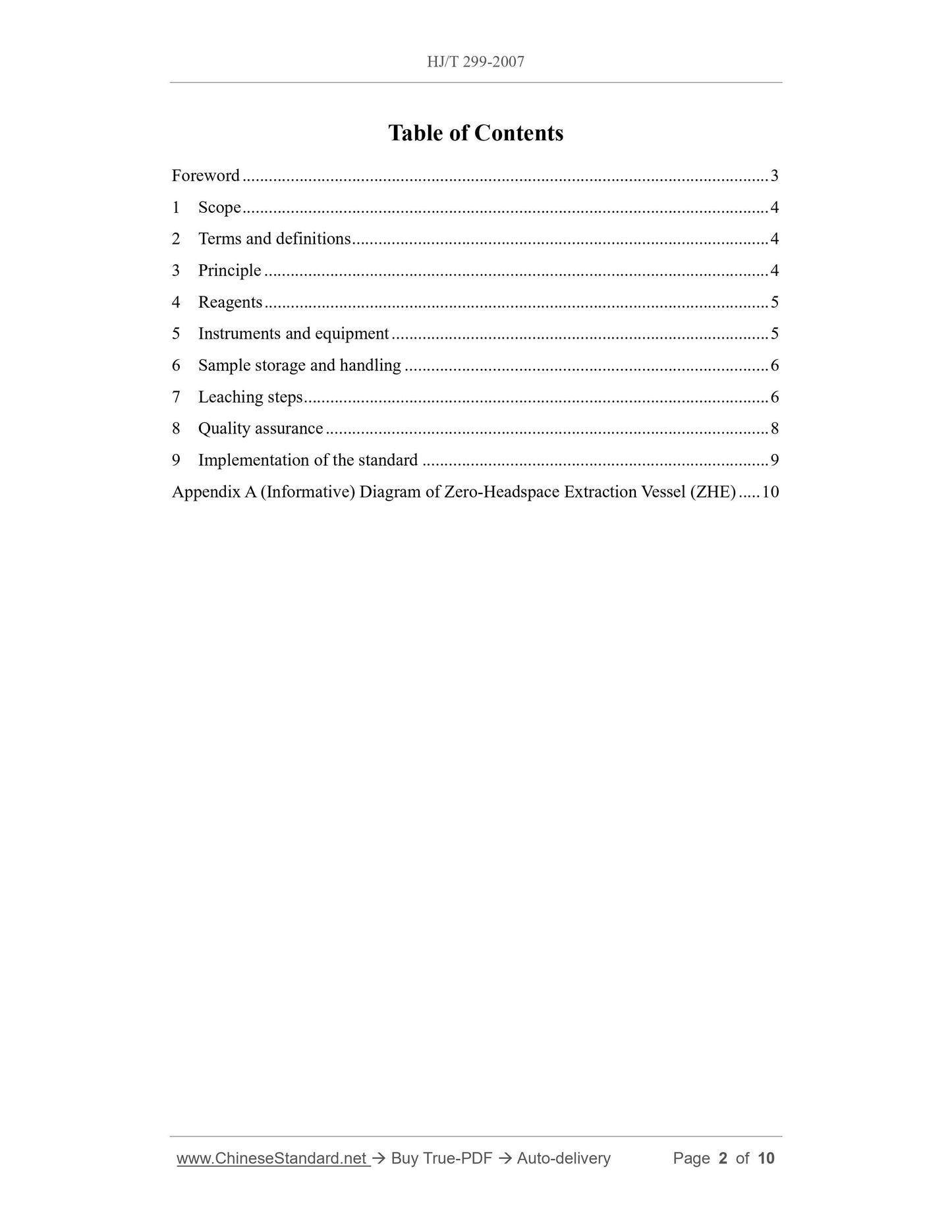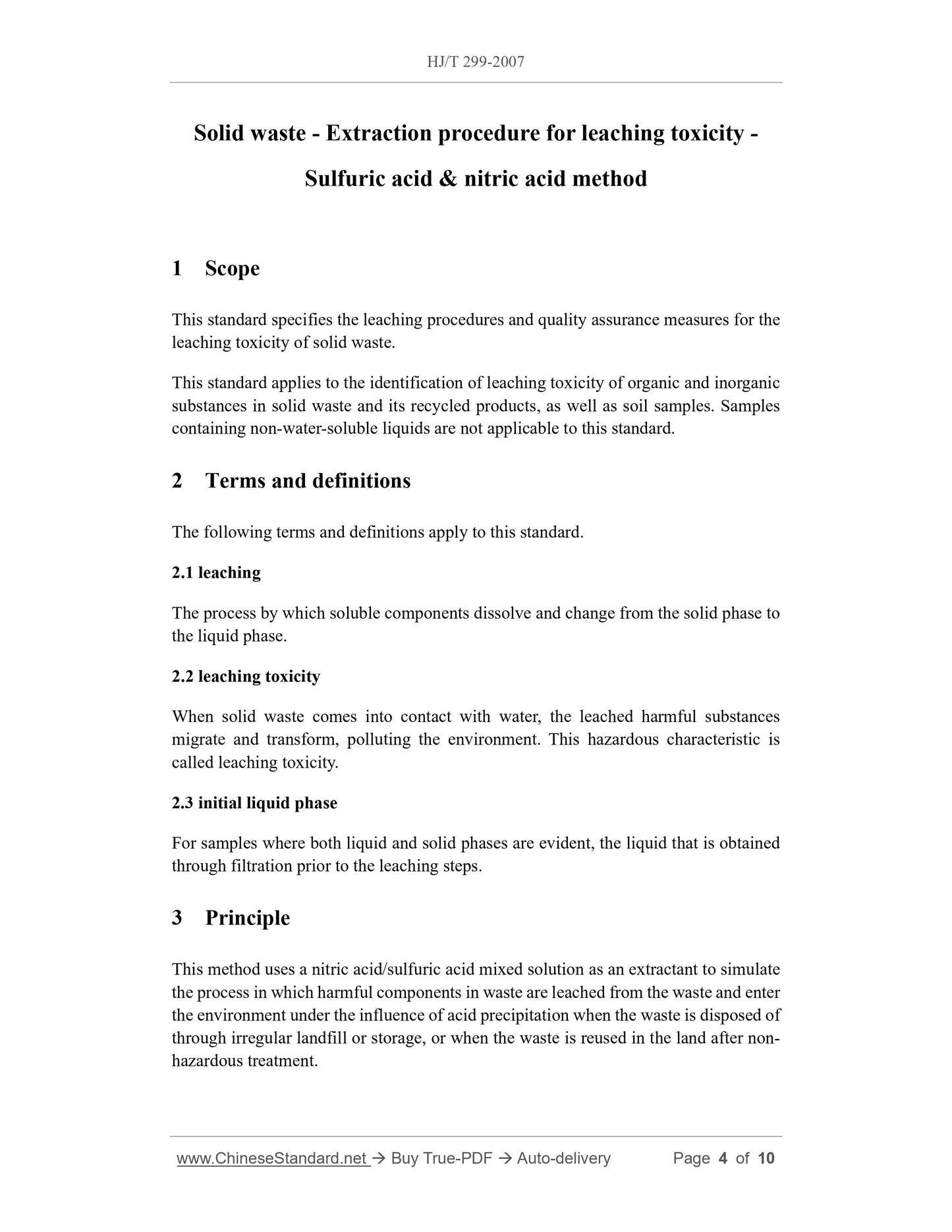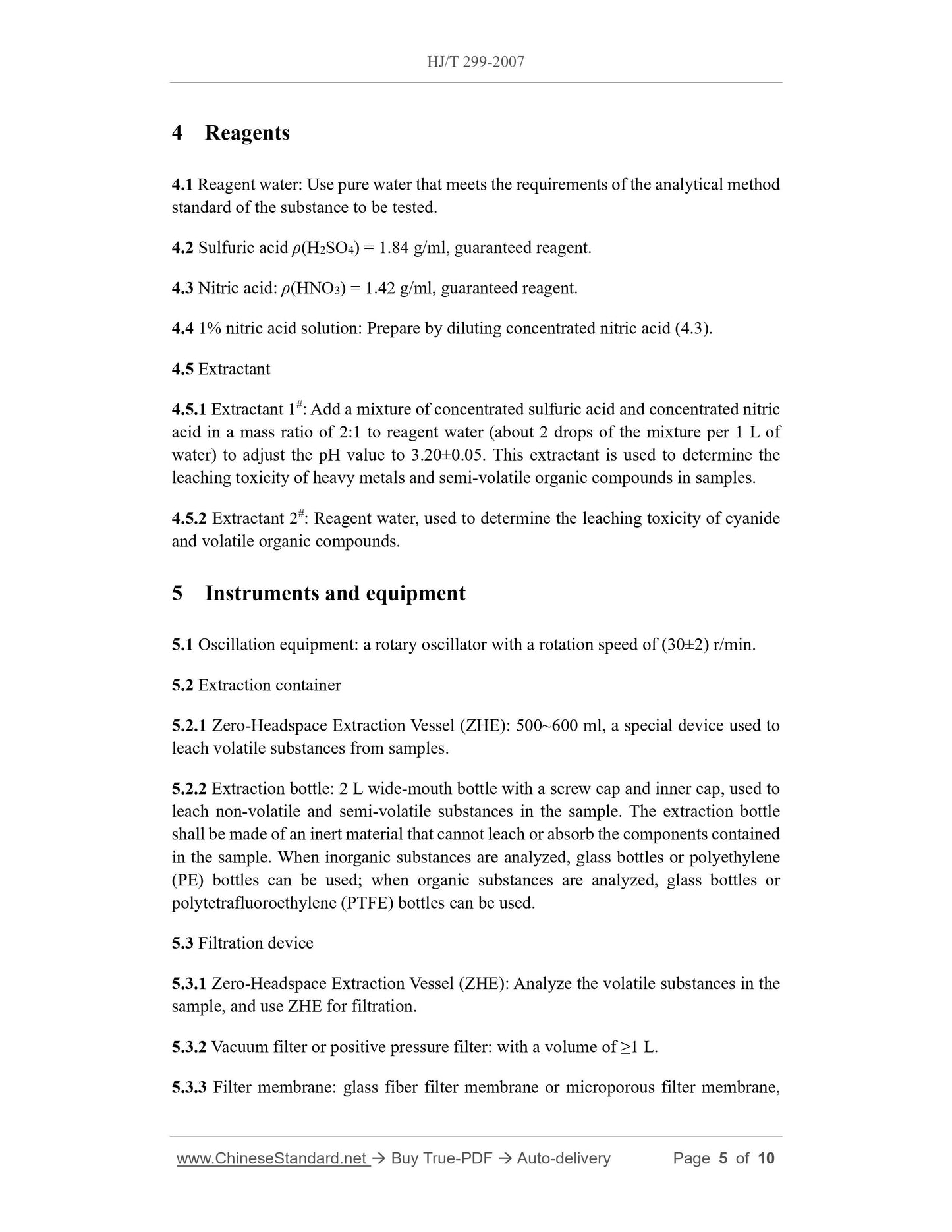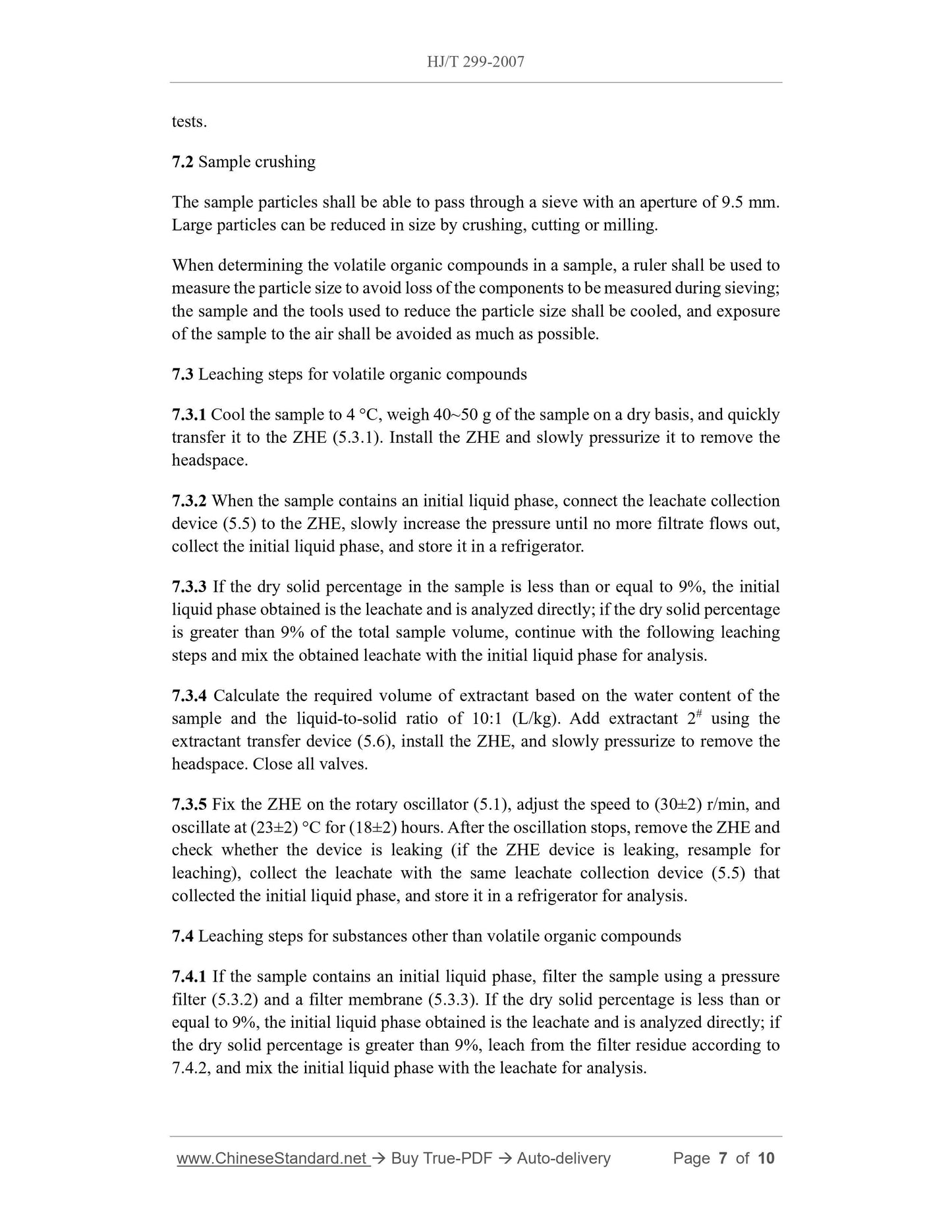1
/
of
5
www.ChineseStandard.us -- Field Test Asia Pte. Ltd.
HJ/T 299-2007 English PDF (HJ/T299-2007)
HJ/T 299-2007 English PDF (HJ/T299-2007)
Regular price
$125.00
Regular price
Sale price
$125.00
Unit price
/
per
Shipping calculated at checkout.
Couldn't load pickup availability
HJ/T 299-2007: Solid waste. Extraction procedure for leaching toxicity. Sulphuric acid and nitric acid method
Delivery: 9 seconds. Download (and Email) true-PDF + Invoice.Get Quotation: Click HJ/T 299-2007 (Self-service in 1-minute)
Newer / historical versions: HJ/T 299-2007
Preview True-PDF
Scope
This standard specifies the leaching procedures and quality assurance measures for theleaching toxicity of solid waste.
This standard applies to the identification of leaching toxicity of organic and inorganic
substances in solid waste and its recycled products, as well as soil samples. Samples
containing non-water-soluble liquids are not applicable to this standard.
Basic Data
| Standard ID | HJ/T 299-2007 (HJ/T299-2007) |
| Description (Translated English) | Solid waste. Extraction procedure for leaching toxicity. Sulphuric acid and nitric acid method |
| Sector / Industry | Environmental Protection Industry Standard (Recommended) |
| Classification of Chinese Standard | Z27 |
| Classification of International Standard | 13.030.10 |
| Word Count Estimation | 9,919 |
| Date of Issue | 2007-04-13 |
| Date of Implementation | 2007-05-01 |
| Regulation (derived from) | SEPA Notice No. 32 of 2007 |
| Issuing agency(ies) | Ministry of Ecology and Environment |
| Summary | This standard specifies the leaching of toxic solid waste leaching procedures and quality assurance measures. This standard applies to solid waste and recycling products, and organic and inorganic soil samples leaching toxicity identification. Samples containing non- water-soluble liquid, does not apply to this standard. |
Share
